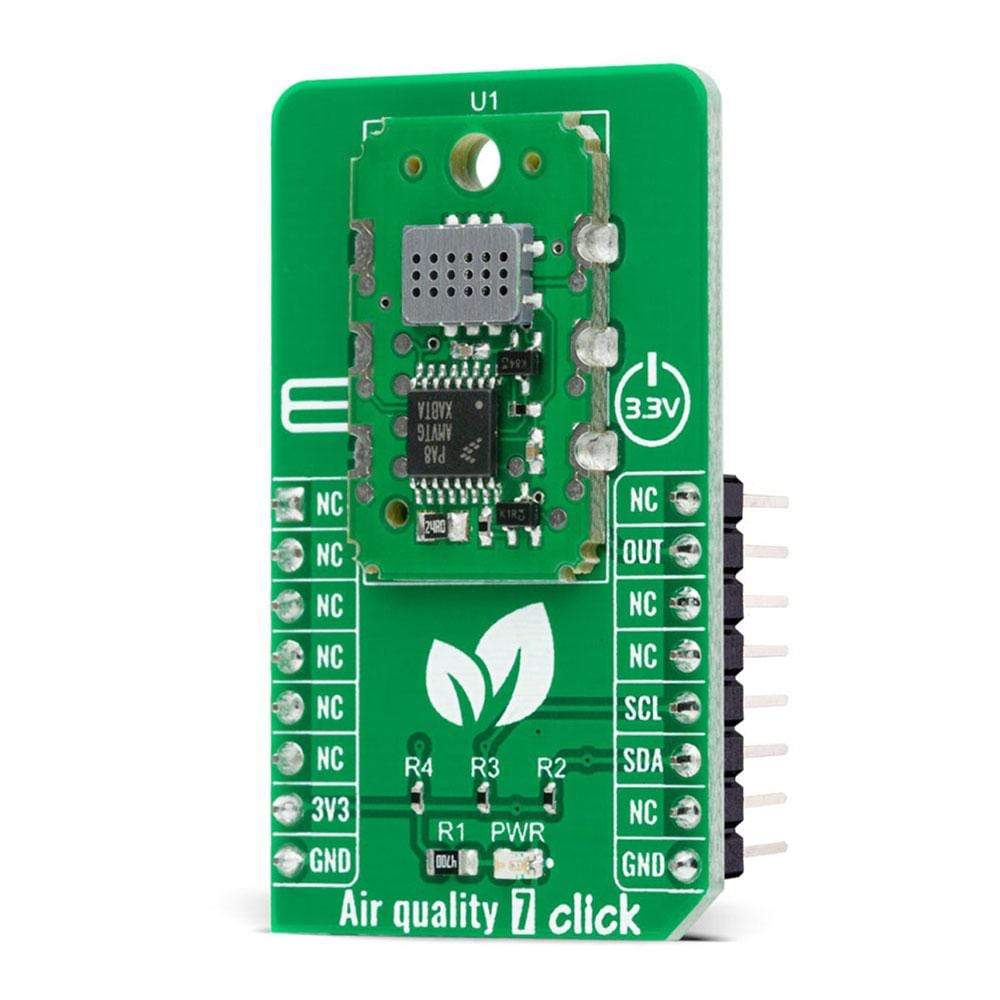
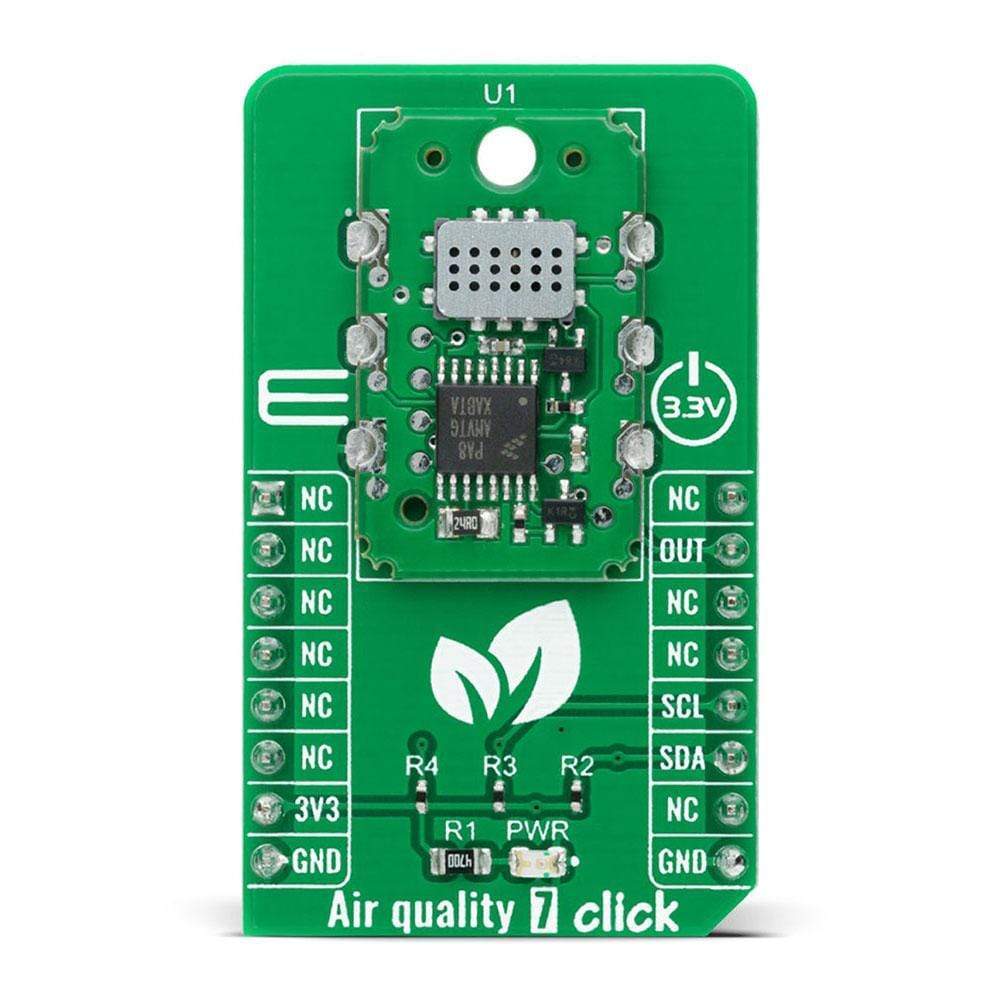
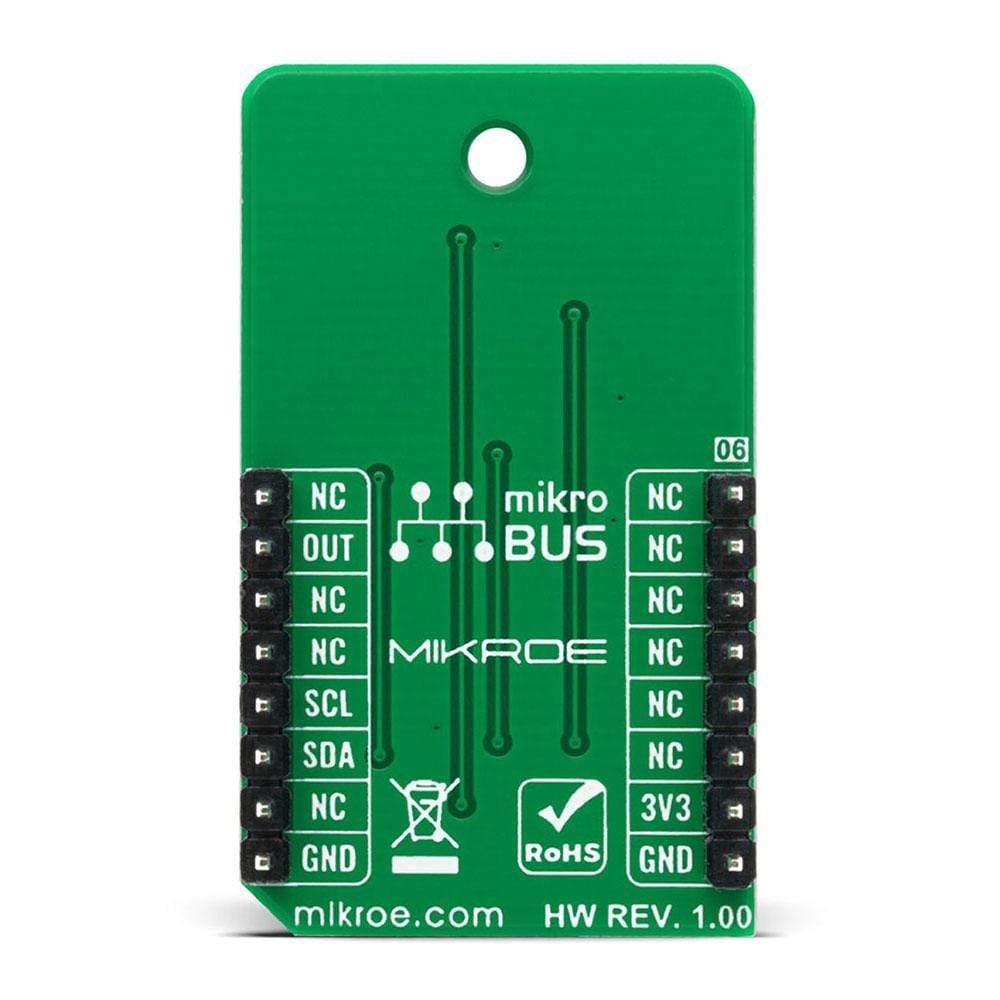
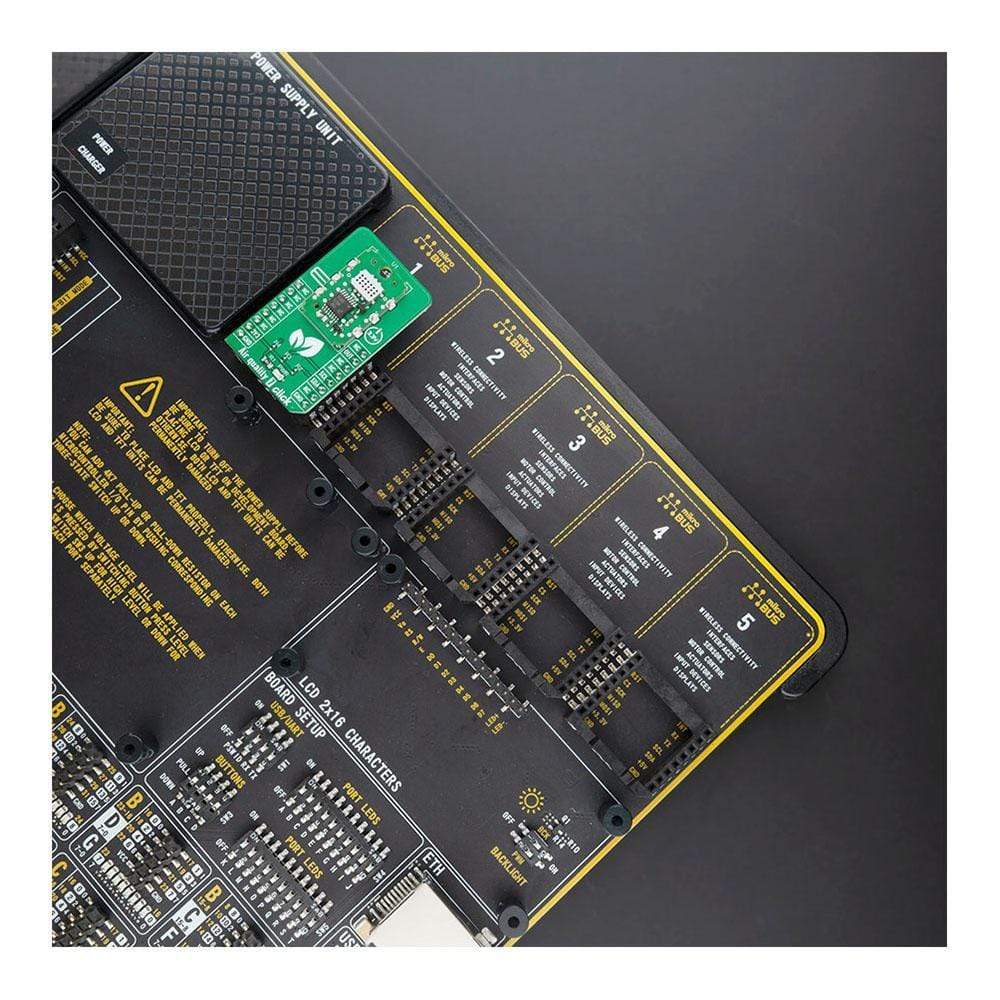
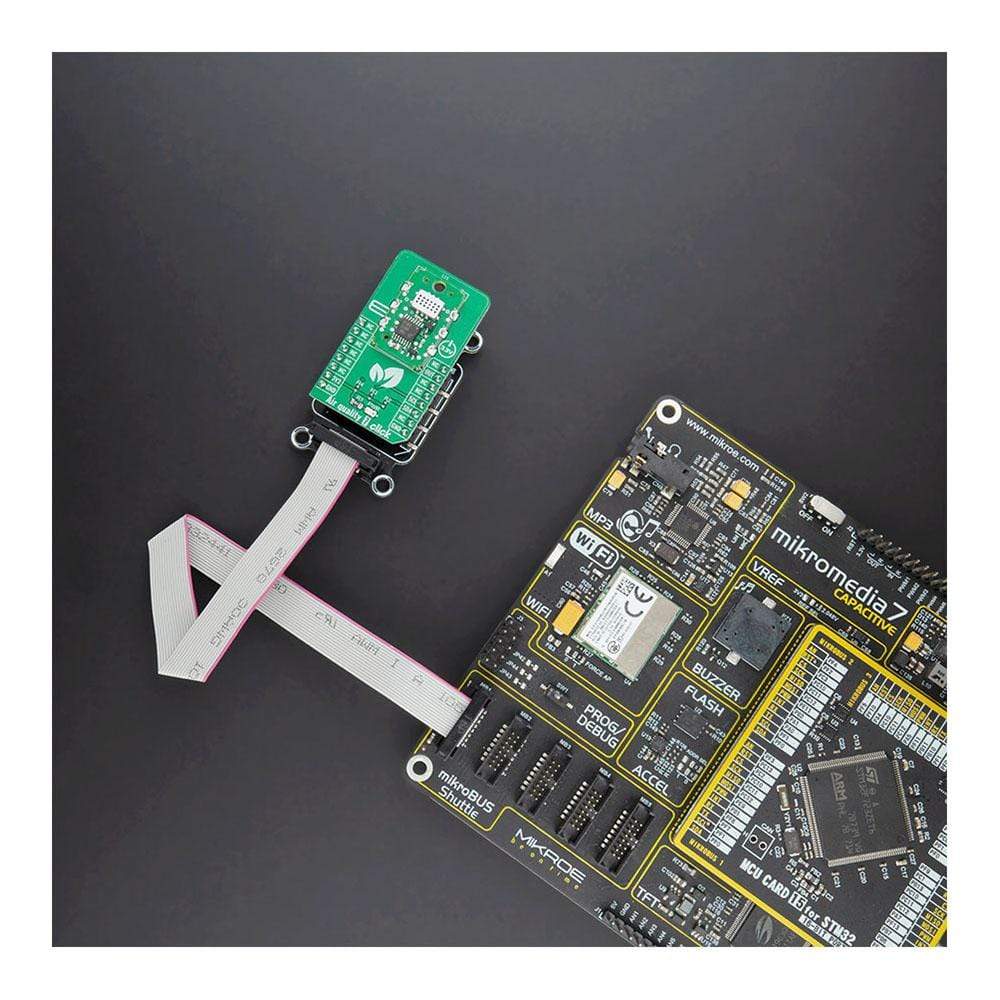
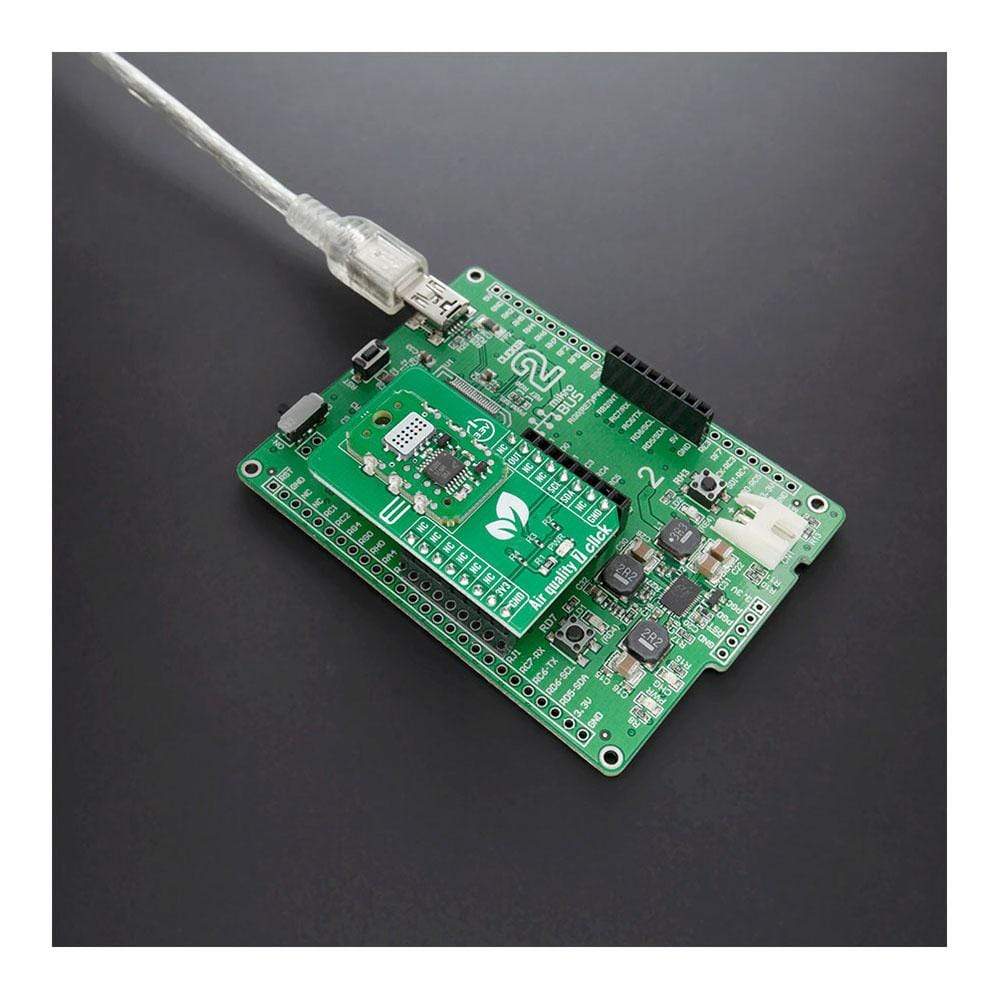
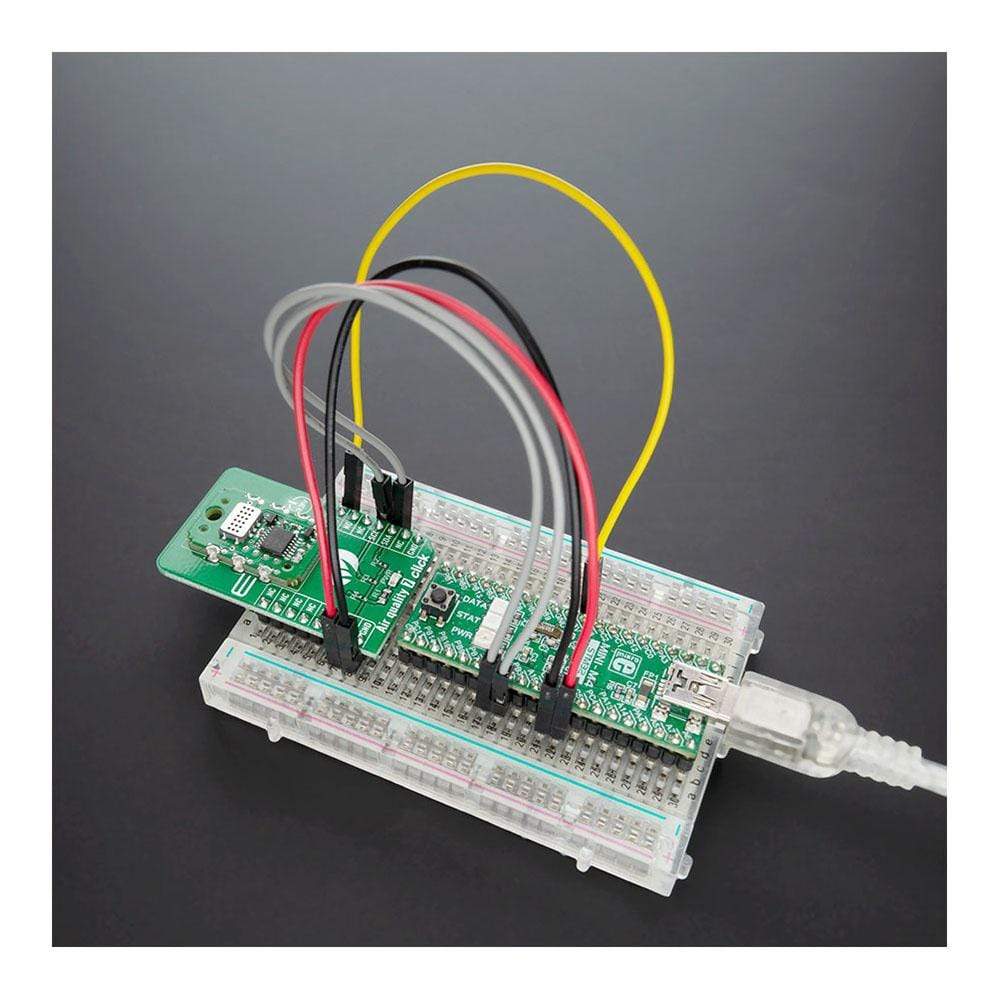
Overview
The Air Quality 7 Click Board™ is a compact add-on board that combines state-of-the-art MOS sensor technology with intelligent detection algorithms to monitor VOCs and CO2 equivalent variations in confined spaces. This board features the MiCS-VZ-89TE, an integrated sensor module for indoor air quality monitoring from Amphenol. This Click Board™, an I2C configurable environmental sensor board, has many features such as low power, wide VOCs detection range, high sensitivity, and high resistance to shocks and vibrations which make it an excellent choice for VOC and CO2 monitoring in confined spaces such as meeting rooms and vehicle cabins, saving energy and reducing cost-of-ownership.
The Air Quality 7 Click Board™ is supported by a mikroSDK compliant library, which includes functions that simplify software development. This Click Board™ comes as a fully tested product, ready to be used on a system equipped with the mikroBUS™ socket.
Downloads
How Does The Air Quality 7 Click Board™ Work?
The Air Quality 7 Click Board™ is based on the MiCS-VZ-89TE, an integrated sensor module for indoor air quality monitoring from Amphenol. The MiCS-VZ-89TE combines the most modern MOS sensor technology with intelligent detection algorithms to control VOCs and CO2 fluctuations in buildings. Among some other appealing features like 3.3V supply, I2C communication, and calibration-free high sensitivity this module has a characteristic a small size factor. The sensor must not be exposed to high concentrations of organic solvents, ammonia, silicone vapor, or cigarette-smoke to avoid poisoning the sensitive layer. It should be protected against water and dust projections, and its Vendor strongly recommends using ESD protection equipment to handle the sensor.
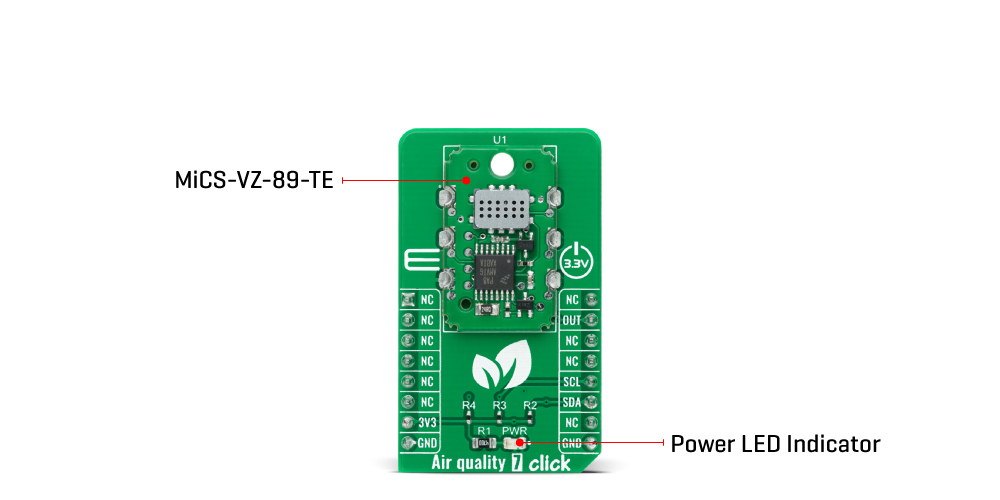
The Air Quality 7 Click Board™ is easy to program and read data because it does not require an overly demanding configuration. The first step is the initialization of all the necessary peripherals and pins. The additional delay time of a couple of seconds during system initialization is needed because this Click board™ needs some time to establish the measurements. The second initialization is the I2C driver and communication test by reading the revision information of the module. If the CRC check is OK it allows the program to go on, and if it's not OK, a user needs to restart the program. If every step is valid, the user can read the air quality status. This can also be seen in an example code that contains easy to use functions that may be used as a reference for further development.
The Air Quality 7 Click Board™ communicates with MCU using the standard I2C 2-Wire interface that supports Standard-Mode operation with a bit rates up to 100 kbit/s. The MiCS-VZ-89TE slave address contains seven fixed bits. The slave address byte is the first byte received following the START condition from the Master device. The first part of the address byte consists of a 4-bit device code which is set to 1110 for the IAQS followed by three address bits (A2, A1, A0) which are programmed at 0. The dual signal output routed on the OUT pin of the mikroBUS™ socket, which brings the results of the measurements, can be read through a multiplexed PWM output or an I2C bus.
The Air Quality 7 Click Board™ is designed to be operated only with a 3.3V logic voltage level. A proper logic voltage level conversion should be performed before the Air Quality 7 Click Board™ is used with MCUs with different logic voltage levels. More information about the MiCS-VZ-89TE can be found in the attached datasheet. However, the Click board™ comes equipped with a library that contains easy to use functions and a usage example that may be used as a reference for further development.
SPECIFICATIONS
| Type | Gas |
| Applications | Can be used for a VOC and CO2 monitoring in confined spaces such as meeting rooms and vehicle cabins, saving energy and reducing cost-of-ownership. |
| On-board modules | The Air Quality 7 Click Board™ is based on the MiCS-VZ-89TE, an integrated sensor module for indoor air quality monitoring from Amphenol. |
| Key Features | Low power consumption, wide VOC detection range, high sensitivity, high resistance to shocks and vibrations, and more. |
| Interface | I2C |
| Compatibility | mikroBUS |
| Click board size | M (42.9 x 25.4 mm) |
| Input Voltage | 3.3V or 5V |
PINOUT DIAGRAM
This table shows how the pinout on the Air Quality 7 Click Board™ corresponds to the pinout on the mikroBUS™ socket (the latter shown in the two middle columns).
| Notes | Pin |
 |
Pin | Notes | |||
|---|---|---|---|---|---|---|---|
| NC | 1 | AN | PWM | 16 | NC | ||
| NC | 2 | RST | INT | 15 | OUT | PWM Output | |
| NC | 3 | CS | RX | 14 | NC | ||
| NC | 4 | SCK | TX | 13 | NC | ||
| NC | 5 | MISO | SCL | 12 | SCL | I2C Clock | |
| NC | 6 | MOSI | SDA | 11 | SDA | I2C Data | |
| Power Supply | 3.3V | 7 | 3.3V | 5V | 10 | 5V | Power Supply |
| Ground | GND | 8 | GND | GND | 9 | GND | Ground |
ONBOARD SETTINGS AND INDICATORS
| Label | Name | Default | Description |
|---|---|---|---|
| LD1 | PWR | - | Power LED Indicator |
AIR QUALITY 7 CLICK ELECTRICAL SPECIFICATIONS
| Description | Min | Typ | Max | Unit |
|---|---|---|---|---|
| Supply Voltage | - | 3.3 | - | V |
| CO2 Monitoring Range | 400 | - | 2000 | ppm |
| VOCs Monitoring Range | 0 | - | 1000 | ppB |
| Operating Temperature Range | 0 | - | 50 | °C |
| General Information | |
|---|---|
Part Number (SKU) |
MIKROE-4196
|
Manufacturer |
|
| Physical and Mechanical | |
Weight |
0.019 kg
|
| Other | |
Country of Origin |
|
HS Code Customs Tariff code
|
|
EAN |
8606027380433
|
Warranty |
|
Frequently Asked Questions
Have a Question?
Be the first to ask a question about this.







